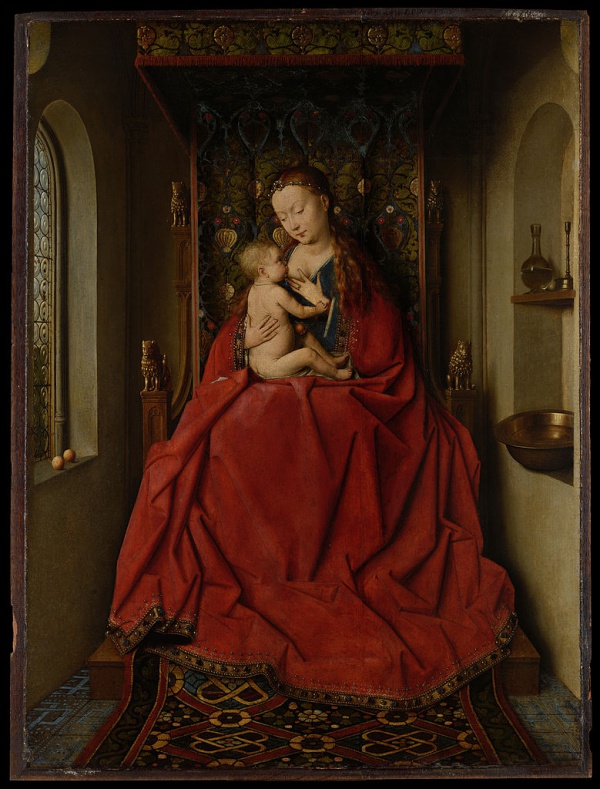Facts About Lucca Madonna
The "Lucca Madonna" is a captivating oil painting by Jan van Eyck, a master of the Early Netherlandish period, believed to have been created around 1437. The artwork depicts the Virgin Mary seated on a wooden throne beneath a canopy, nursing the infant Jesus. Originally part of a triptych intended for private devotion, the painting is now housed in the Städel Museum in Frankfurt.
The painting derives its name from Charles II, Duke of Parma and Lucca, who owned it in the early 1800s. Many art historians consider this piece to be one of van Eyck's later works and suggest that the Virgin Mary might be a portrayal of the artist's wife, Margaretha.
The painting is rich in symbolism, blending elements of the "Nursing Madonna" and the "Throne of Wisdom" thus presenting Mary as both a nurturing mother and a regal figure. The throne she occupies alludes to the throne of Solomon, and she symbolically serves as an altar that supports Christ, akin to the altar in a Mass.
Van Eyck’s meticulous attention to detail is evident throughout the setting. The room features symbolic items such as fruits on the windowsill, a reflected image in a mirror, and objects like candlesticks and a carafe. The intricately designed floor tiles and the room’s arrangement suggest the setting of a small chapel.
This painting is part of a series of Madonna artworks that van Eyck created between the completion of the Ghent Altarpiece and his death in 1441. The "Lucca Madonna" is one of six surviving pieces from this period. Other notable works in this series include the Dresden Triptych, Madonna in the Church, and the Madonna of Chancellor Rolin.

 Switzerland
Switzerland